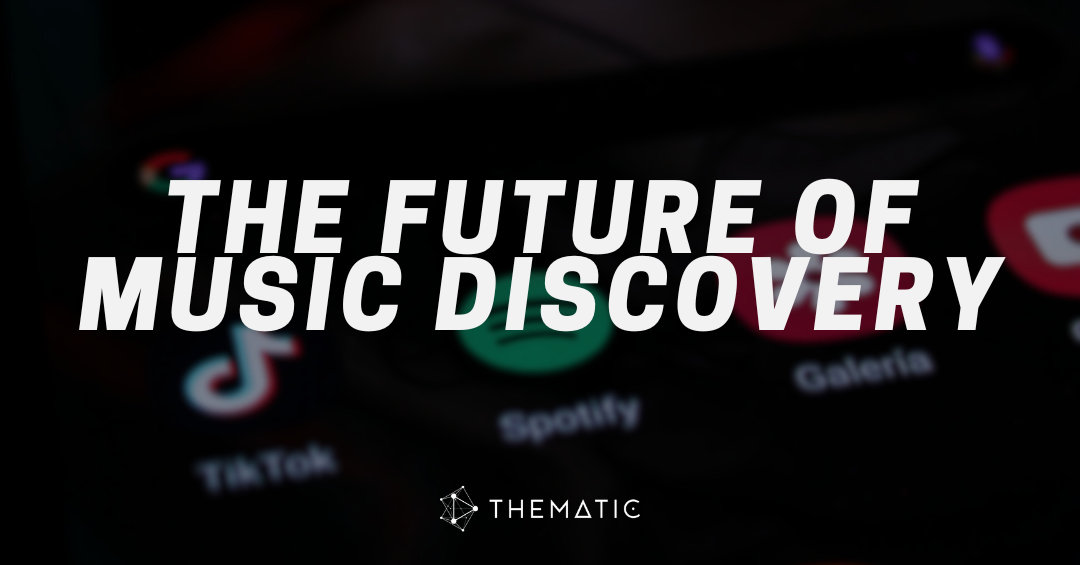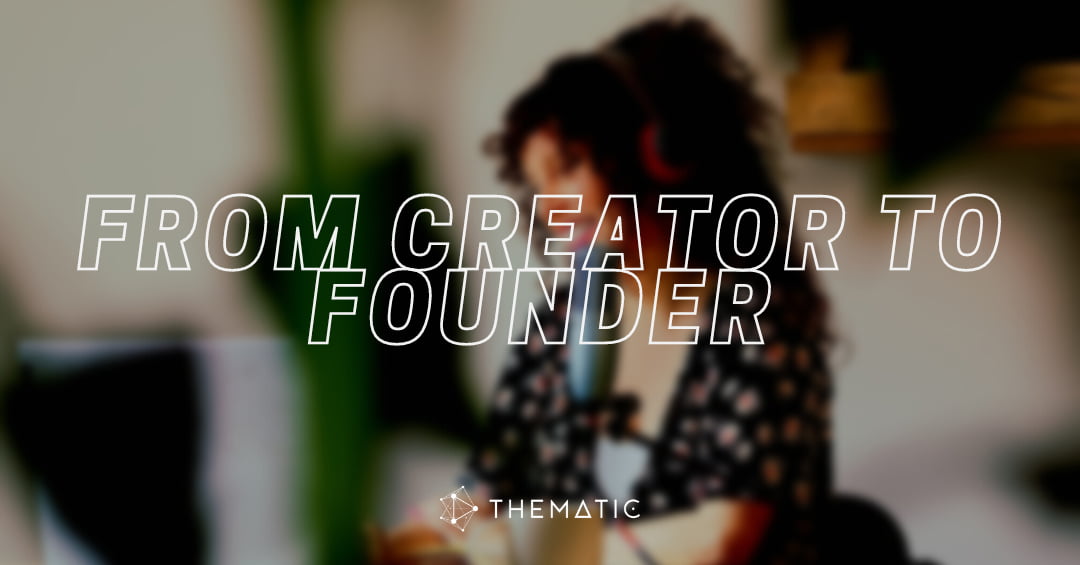The Creator Economy, this trendy phrase has seemingly overtaken every social conversation and industry report over the past couple years, and the search data from Google underlines its rise in popularity.
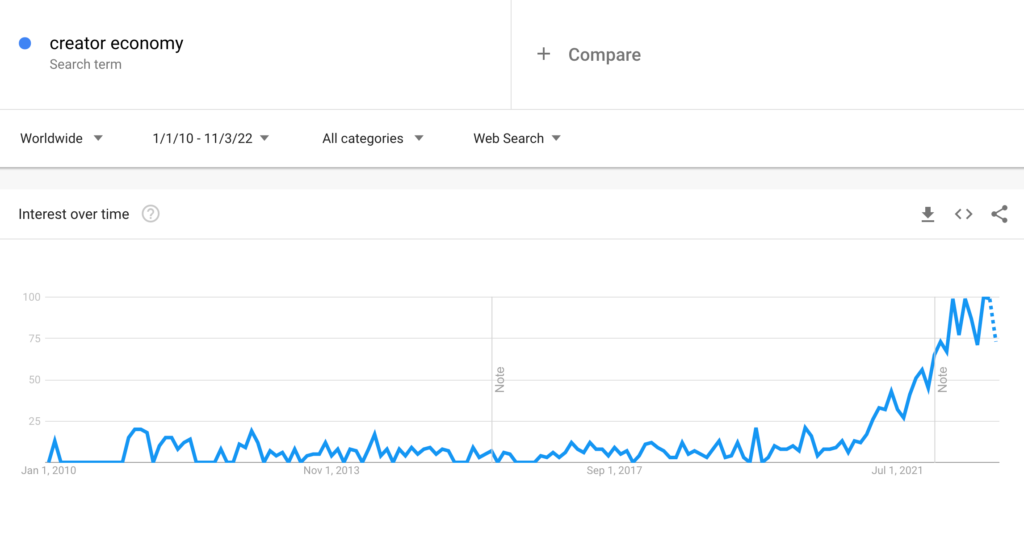
In the late summer and early fall of 2020, the phrase took root in popular culture with the debut of SignalFire’s Creator Economy Report. Their findings revealed that 50 million people identify as “creators” around the world. They defined the creator economy as:
“the class of businesses built by over 50 million independent content creators, curators, and community builders including social media influencers, bloggers, and videographers, plus the software and finance tools designed to help them with growth and monetization.”
SignalFire’s Creator Economy Report
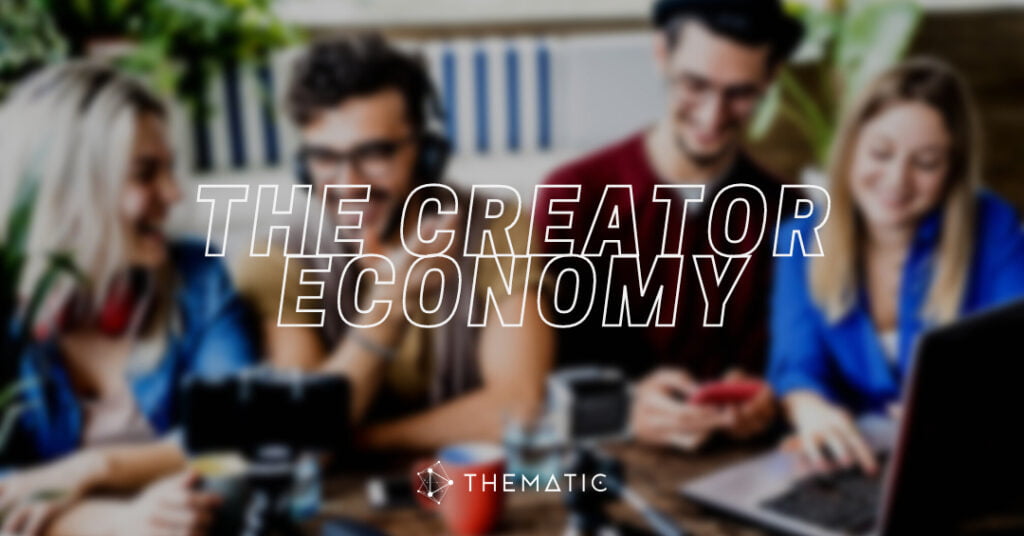
This article covers Thematic’s perspective on the Creator Economy and its fundamentals – what it is, when did it begin, and where the creator economy is headed. We’ve included table of contents below to allow you to jump easily to a specific section.
- The history of the Creator Economy
- What is the Creator Economy?
- How does the Creator Economy work?
- Opinions on the Creator Economy, from Creators themselves
- The Good and Bad of the Creator Economy
- The Community
The history of the Creator Economy
2020 is not when the creator economy began. It’s simply when people started to take real notice at the massive impact driven by digital-first creators on an economic level.
Let’s rewind to 2005 with the launch of YouTube. What started as a simple video sharing platform to store archived footage and share your favorite cat videos, would become in the years to follow a cultural sparking point for the burgeoning creator economy.
As niche communities took to the platform to share their stories and media platforms embraced its widespread distribution opportunities, it slowly transformed from a “viral video platform” into a viable option for cultivating thriving communities, starting careers, and even launching businesses.
Today, these success stories are everyday news, but the idea that a beauty vlogger could launch a $1 billion company from her online YouTube community (read about our co-founder Michelle Phan’s story about starting ipsy on Inc. here) or that an independent musician could develop a $4 billion startup to support creators like him (see Jack Conte’s story about developing Patreon on CNBC) was unheard of only 10 years ago.
In 2007 YouTube launched the first-of-its-kind Partner Program, enabling creators to participate in the ad revenue generated from their videos. This move validated the idea that individuals could follow their creative pursuits, monetize their audience, and build businesses from their digital audience.
Then, by the mid-2010s, a new layer of creator monetization took hold. Enter influencer marketing (watch its rise in worldwide popularity here). Brands began to embrace the idea of influencers (and reaching their consumer-rich communities) as a new means of brand awareness and marketing, and the creators on the receiving end of these deals were infused with a new way to monetize their personal brand and audience.
Both of the moments were game-changing cultural shifts that helped lay the foundation for the creator economy as we know it today.
That being said, the creator economy is not just a trend. It is a foundational shift in entrepreneurship that started almost 20 years and is continuing to expand.
What is the Creator Economy?
The Creator Economy is the class of over 50 million creatives, platforms, marketplaces, and tools democratizing creative expression and entrepreneurship. It empowers an independent creative class to make a living from their passions on their own terms.
In simple words, the Creator Economy empowers creatives to:
👉 Follow their creative passions,
👉 Cultivate community,
👉 And monetize their creations and audiences
Through new tools and platforms that enable content creation, distribution, and monetization.
And it’s massive.
How big is the Creator Economy?
Most creator economy reports mention a market size of over 50 million creators that is worth over $100 billion.
Depending on which industry report you’re reading, the numbers are undeniable. Take Adobe’s “Future of Creativity” study which stated that “more than 165 million creators joined the global creator economy in the last two years.” Or read Goldman Sachs’ latest intelligence briefing that states that “the creator economy could approach half-a-trillion dollars by 2027.”
No matter which report or stat you read, the key takeaways are the same:
- The creator economy is undeniable and only continuing to scale
- Most creators are intrinsically motivated by the desire to create (not money)
- New ways of monetization are emerging and underpin the conversations behind Web3
How does the Creator Economy work?
The creator economy works through the coming together of creators and platforms and tools to enable the creation, distribution, and monetization of new content.
Original Creative Content
We call them content creators for a reason. At their core, creators provide value through the distribution of their original content.
Content’s value can be felt in a multitude of ways, ranging from knowledge-sharing to entertainment (and the values can be shared within one piece of content). We’ve identified some the most common values produced by content:
📚 Knowledge: Information is key. Knowledge-based content teaches skills, solves problems, and introduces new concepts to the viewer. This content can take the form of How-Tos, Tutorials, Life Hacks, How It Works, The History Of, and Why Does, to name a few examples.
🍿 Entertainment: You know it and love it, it’s entertaining. From TV shows to movies, comedy skits to stunts, entertainment content captures attention and engages the viewer.
🤝 Connection: Call it emotional, engaging, or aspirational, content that drives creator-viewer connection is critical in building community. The content emotionally invests the viewer in the creator’s story and drives parasocial relationships. It creates fandom (and superfandom) and creates the long-term “relationships” that transform casual viewers into followers and subscribers.
Content Creators: the power of the person
Creator-driven content works because it is humanized and viewer-selected. It is person-to-person and not force-fed by larger companies. With creators, viewers choose to lean-in to the content and creator of their choice, and are no longer left wanting with whoever is starring in the latest TV sitcom.
The plethora of content (and creators) available allows all interests to thrive in their own niche communities – there’s content to please practically everybody. From PlantTok on TikTok to BookTube on YouTube, and the endless amount of Discord servers and Reddit communities to browse through, the interest-driven communities have taken hold of today’s social culture.
Viewers can find and follow that particular person who shares the same values, looks like them, and is interested in the same topics. And if for some reason they can’t, the opportunity to be that person for that community exists – anyone can be a creator.
Creator Tools & Platforms
The dissemination and democratization of content and its value is enabled by the wide-scale distribution platforms we typically call social media platforms. YouTube, Instagram, TikTok, Twitter, and the rest are essentially means of distribution (and sometimes monetization) for the content produced by creators.
The platforms themselves are not the “business” of creators. Rather, they are the enablers for the business of creators. They are the means by which creators can get their content to audiences in order to cultivate community and create marketing and distribution channels (for bigger business opportunities).
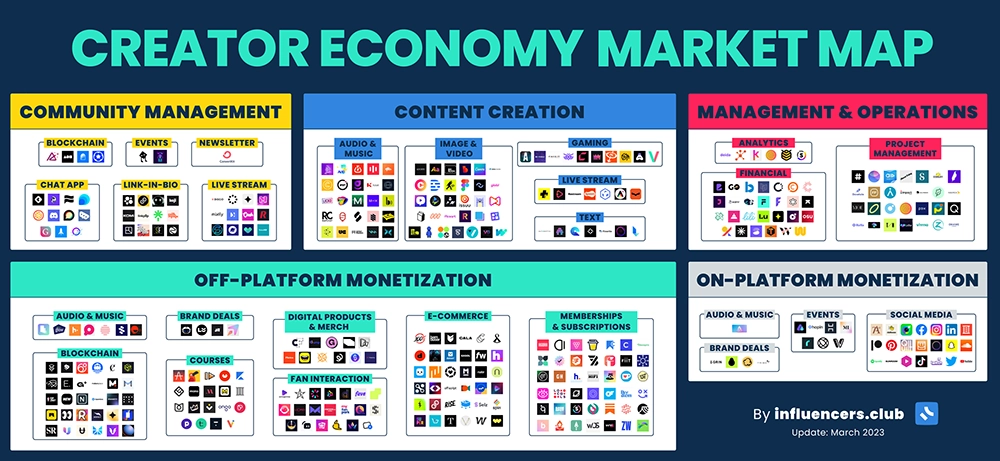
And at the end of the day, the platforms come and go. You’ve seen the Vine’s, Musical.ly’s and Google+s come and go, launch, rise, and die (or be acquired), but the creators keep on creating.
The fluctuating (and frustrating) changing of platforms and chasing of algorithms to stay relevant has proved an uphill and winding road for creators over the years. As such, the calls for creator-owned communities, ones un-reliant on a platform’s algorithm or rules, continue to increase (enter the newest creator-centric buzzword: web3).
We’re sure to see more platforms and tools launched in the coming years to solve these problems and enable even more functionality and monetization for creators. The future is bright in the creator economy.
Opinions on The Creator Economy, From Creators Themselves
As we’ve mentioned above, the topic of the creator economy seems to be on everyone’s minds (and LinkedIn posts) these days. Many traditional companies are looking for ways to enter the space and participate in this new cultural moment, and many startups are being thought into existence with the hope of extracting value from the monetizable opportunity of “the creator economy.”
As with any emerging industry, we trust first and foremost the people at the center of the economy itself. In this case, the creators.
Let’s hear below from some of the leaders who both pioneered the creator space and who are leading the charge of building creator-first tools and companies.
Michelle Phan (Founder of ipsy, EM Cosmetics, Thematic, Summer School)
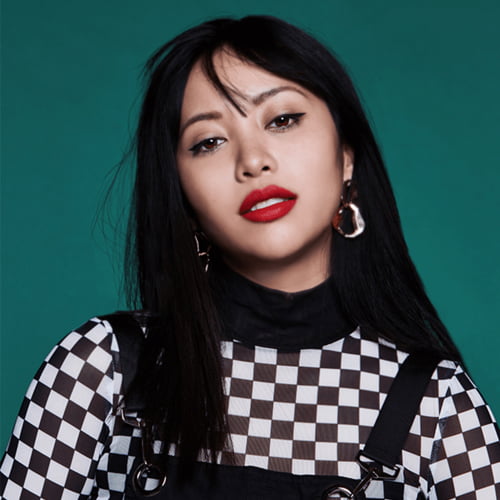
“The creator economy is so much more than being famous online. It’s an entire ecosystem made up of creatives and problem solvers behind every piece of content you see online. Imagine the person behind the camera: the writer, curator, designer, editor, producer, and so much more involved behind the scenes. It’s a world of storytellers, designers, and innovators, just like you, who are utilizing their passions to create a new vision of their future.
I (@michellephan) was the first woman to reach a million subscribers on YouTube, created a business worth over a billion dollars, and it all started with these makeup tutorials. I was uploading on YouTube, and even though I was creating all this content for free, I knew how important it was to create from a place of passion and nurture my community.
After investing all my time and energy into building my online brand identity, it finally paid off but… being a pioneer comes at a price. Because this space was so new, I had to pave my own way. Although I had a lot of wins, I also made a lot of mistakes. I wish I had a mentor back then, but now I can be that mentor for you.”
Michelle is currently developing tools and resources to empower the next generation of creators. Her latest creator projects include her Summer School mentorship program and Thematic, a peer-to-peer marketplace where content creators and music artists can support each other through community-base music licensing.
Thematic was born from Michelle’s personal battle with a copyright infringement lawsuit with Ultra Records over music she thought was properly cleared. With Thematic, for the first time ever, creators can license assets from other creators in exchange for providing them with discovery and marketing opportunities.
Jack Conte (CEO of Patreon)
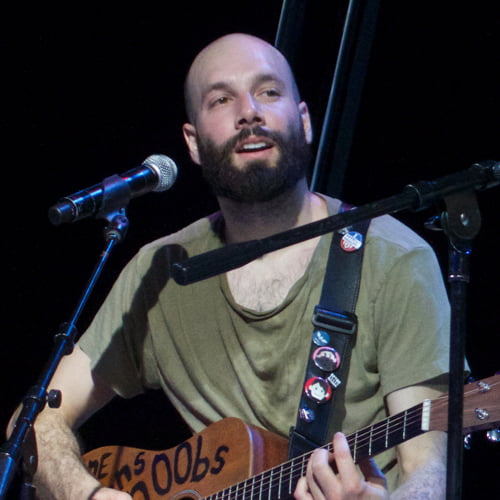
“The creator economy is this birth of, you know, now hundreds of millions of people who are taking advantage of these wonderful creation tools that are now available to so many people at a scale that I think we never have seen before, you know, in our history… it’s easier and cheaper and faster to make things than it’s ever been in human history, and there’s now hundreds of millions of people making things.
And then if you combine that with the fact that we’re all now connected because the last, you know, 20 years or so of the internet, you get people who are making things and then reaching others with the things that we make. We call those people “creators.”
Washington Post: The Path Forward: The Creator Economy with Jack Conte, CEO and Co-Founder, Patreon
Known initially for being one-half of the band Pomplamoose and now most recognized as being the founder of Patreon, Jack Conte experienced first-hand the struggles of earning a sustainable income from his videos on YouTube. To solve his own problem (and the problems of creators and musicians like him), Jack developed Patreon to “make it easy for creators to get paid.” Today, Patreon supports 250,000+ creators in achieving more sustainable revenue income.
Hank Green (Founder of VidCon)
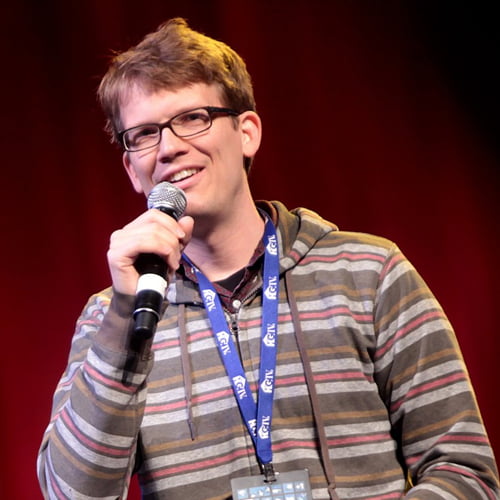
“The creator economy will only ever make sense when we stop imagining that it is primarily driven by money. Most creators are driven primarily by attention and achievement.“
Green says that over the next five to ten years, platforms need to figure out how to sustainably monetize short-form content in a way that benefits creators—and give those creators tools to establish and maintain deeper connections with their audiences.
“Otherwise there isn’t a creator economy here,” he says. “There is just people making stuff, burning out, audiences being temporarily satisfied with candy-like content, and then all of it coming eventually crashing down—one assumes. But maybe not. Because there’s always someone there to take the space of the person who burned out and say, ‘This is good. I like it.’ For six months. Until they burn out too.”
Tubefilter: Hank Green says “the curse of the swipe” is upon us
Aside from creating the most successful creator convention to date (VidCon), John and Hank Green have been giving back to the next generation of creatives by providing creators with grants “to help them get the equipment, help, or expertise they need” since 2014.
The above-mentioned creators are just some of the first generation of “creator-founders,” and we’re bound to see many more follow in their footsteps.
The Good and The Bad of the Creator Economy
While the creator economy as a whole unlocks growth, creativity, and new forms of business and monetization for the creative class, it is still a nascent space with room for improvement. Let’s dig in.
What are the benefits of the Creator Economy?
The benefits of the creator economy are astounding. Creators now have a monetizable option to follow their creative pursuits and make money. No longer limited to enjoying hobbies for fun in their non-working hours, creators can put their passions to work, enabling them to drive new income streams.
✅ It’s easier than ever to create
Anyone can become a creator today.
The rise in the number of creators can be partially attributed to the proliferation of creator tools that make it incredibly easy to create. As a result, creators see higher competition rates and an ever increasing struggle to ‘break through’ in finding an audience.
Take Canva, for example, which has enabled anyone to create and design. Or look at TikTok and its extremely easy-to-use video creation software. The barriers to entry for being a creator in today’s world are slim to none.
✅ New Career Paths
The creator economy has unlocked new paths to creating wealth and creative freedom. Creators can now make a living in the creator economy by pursuing the creative passions.
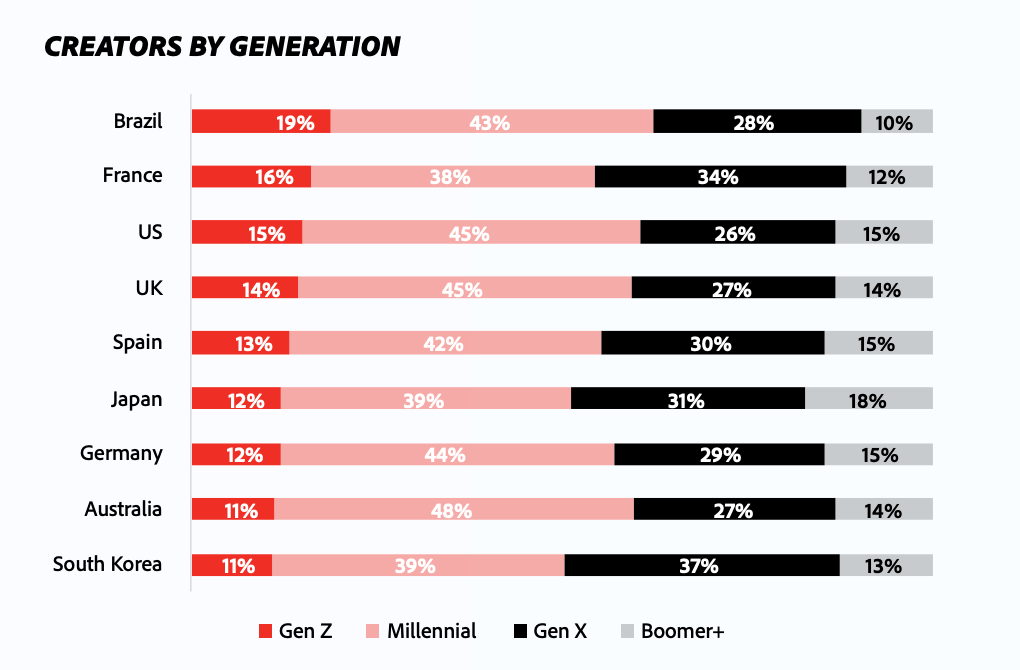
As a result, Millennials (who according to Adobe’s “Future of Creativity” study represent 42% of the Creator Economy), Gen Z (14%), and soon Gen Alpha, are finding ways to complement (or even replace) traditional career paths in favor of launching their own businesses. This is all enabled through the tools and platforms provided by the creator economy companies.
✅ The Rise of the Creator Middle Class
We are also seeing the growth of what is being called the creator middle class. These are creators who have been able to navigate the ever-changing creator space and unlock enough revenue streams through a combination of ad revenue, brand integrations, and self-created products to self-sustain solely as a creator.
This cohort of middle-class creators are past the point of part-time creation (in their off-work or school hours), but aren’t at the level of success or fame as the MrBeast’s of the world. Nevertheless, they are driving sustainable business and are making a living from their creative efforts.
Seeing this middle class’s emergence speaks to a long-term shift in the fabric of the creator economy. With wealth slowly shifting from the top 1% of creators to the masses or long-tail talent, a more sustainable ecosystem is emerging.
While there is definitely a need for more tools and resources to support this class of creators, we see great potential in what this can mean for the future.
What are the problems of the Creator Economy?
However, with all of the upward motion and positive strides forward, the industry of being a creator is still very new and constantly in development.
Some of the biggest problems of the Creator Economy are that creators constantly face the struggle of navigating platform shifts, chasing search and discovery algorithms, and finding ways to monetize their content and communities.
🌧 (Lack of) Monetization
As platforms test and iterate on new ways of creator monetization and revshares (the TikTok Creator Fund or new revenue splits on Twitch, for recent examples), the percentage allocated to creators always seems to fall a bit short (read Hank Green’s comments on TikTok monetization here or Twitch streamers’ reaction to their compensation here). Creators are often getting the short end of the stick when it comes to figuring the balance between platform and creator revshares, when it seems there’s just not enough money in the pot.
Couple this with copyright issues, demonetization, and other IP ownership legal battles, and it can turn into a creator nightmare.
The industry still has a lot to figure out in this regard, but there’s hope that the ideas championed behind web3, blockchain, and owning your community will help to change the narrative.
🌧 Competitive Market
The flip side of the ease of creation is that it has become increasingly difficult for creators to stand out.
With over 300 million people globally identifying as creators (per Meta’s Rise of the Creator Economy report), you can imagine how much work it can be to find an audience and grow it to a meaningful (and monetizable) level.
🌧 Creator Burnout
The creators who live and die by the algorithm in pursuit of more views and more subscribers, but fail to capitalize on their massive audience and distribution channels, struggle to build true, sustainable business from their content.
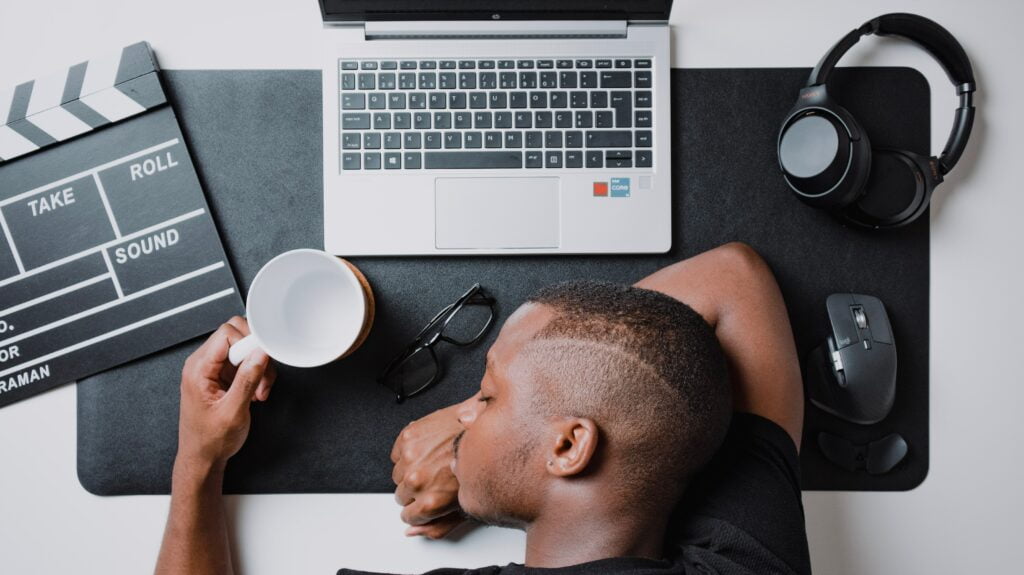
These creators are at the most risk of experiencing creator burnout. Creators are constantly encouraged to create more content to be promoted by the algorithm, or to be present on any and all discovery platforms at all times to remain relevant (start a podcast, tweet more, start a newsletter) – the demand never ends.
Coupled with navigating a balance between traditional work/school/family life and creating endless streams of content in an effort to grow their audience and monetize, many creators simply burn out and give up. Their creator careers are cut short and they return to “normal” life.
🌧 Audience without Business
Unfortunately, many creators fail to realize that the audience is not the end-all-be-all. Their audience simply unlocks the opportunity for product discovery and distribution (from brand deals to wholly-owned products and services). Unless their goal is to become a media or production company, the content of YouTube videos, Instagram posts, and TikToks should ultimately be considered a marketing channel – one that enables community building, which eventually leads to more significant business opportunities
See how Michelle Phan has navigated her content platforms as a great case study. While her 8M+ subscriber strong YouTube channel was initially a means for her to share her favorite makeup looks and tutorials with her audience, Michelle has been able to grow beyond YouTube in building and investing in massive businesses (ipsy, Em Cosmetics, Thematic, to name a few). Her social media, while still active in support of her passions, now doubles as powerful marketing channels to support her entrepreneurial efforts.
The same goes for MrBeast. Through his massive following across social media, he is able to power and drive awareness for his company portfolio – projects ranging from charity work (Team Trees, Team Seas), to food and snacks (Feastables, MrBeast Burger), mobile apps and products (Finger on the App, Backbone), and more. The brand is MrBeast, not just the YouTube channel (aka the marketing channel).
🌧 Too Much Too Fast – is the Creator Economy a bubble?
2022 and 2023 already have been years filled with a relentless stream of layoffs within the creator economy. From Patreon to Substack, Facebook to Twitter, Snap to Cameo, companies large and small are announcing massive layoffs amid talks of recession and the global markets. It’s an unfortunate side effect of the hiring boom that was catapulted from Covid and global lockdowns.
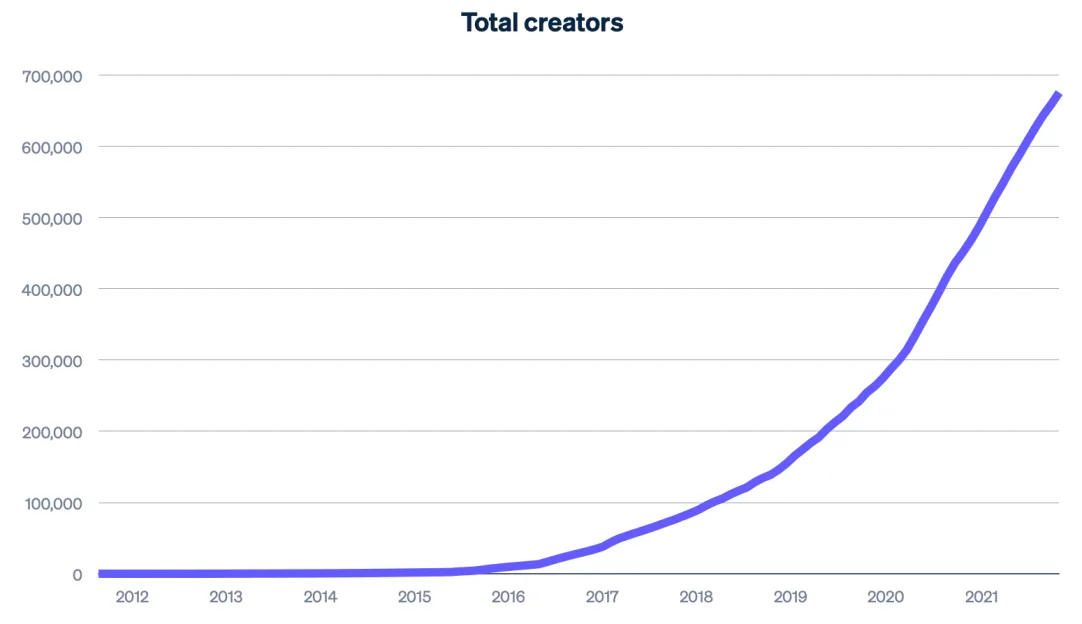
With the unprecedented global phenomenon of Covid accelerating the move to creator-ship across the world (see the above graph of creators year-over-year from Stripe’s Indexing the Creator Economy post), creator economy companies hired fiercely and quickly. Fast-forward a few years, and although the number of creators and the creator economy as a whole continue to grow, the monetization models to support this growth have not (see the section on Monetization above).
This sizing correction is being felt large-and-wide in the creator economy community and many have questioned if the creator economy is just a bubble ready to pop. However, these shifts will hopefully help to focus creator-centric companies in building more meaningful tools that drive sustainable value and monetization (and not just short-term growth).
The Community of Creators
The creator economy does not exist without community. Point blank.
Creators sit at the intersection of niche communities, content, and brands. Without their communities, they are simply content production engines, with no one listening on the other end.
As such, the creator-community relationship is a delicate balance and reflection of the parasocial relationship. You’ve heard the stories of communities abandoning their favorite creators after scandals emerge (here’s one as a quick example). However, more often than not, you are reminded of the power of community in coming together and making change.
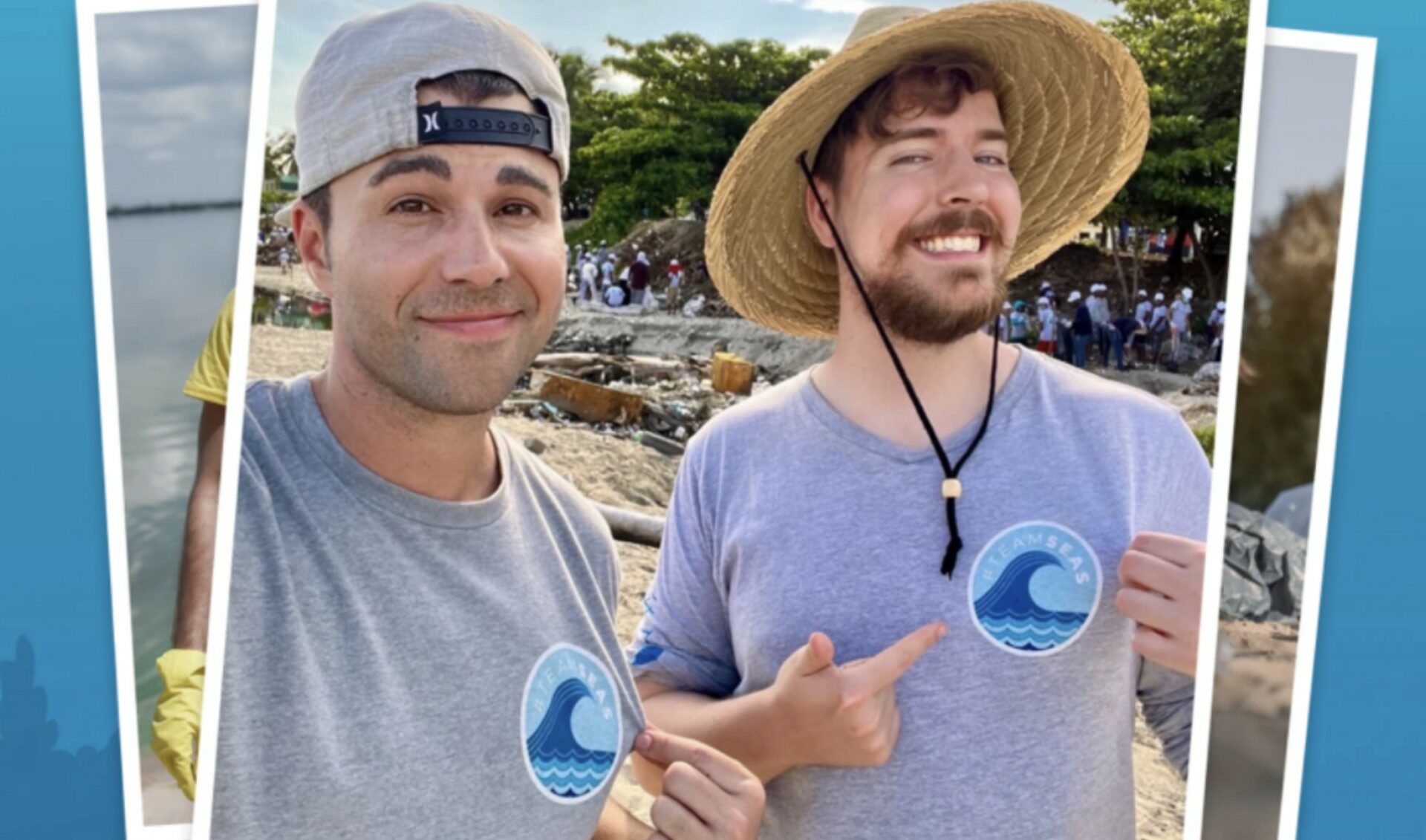
While viewer communities promote the growth of individual creators, it’s the collaboration and sharing between creators that is driving a supportive and sustainable creator ecosystem.
Take the efforts of MrBeast and Mark Rober noted above. While both have massive audience reach individually, in coming together on this project they were able to exponentially expand the total audience of their fundraising efforts.
More and more we hear stories of creators coming together in collaboration and in support of the creator economy as a whole. From Jack Conte launching Patreon to unlock additional opportunities for creators to monetize their audience, to Michelle Phan building new tools and services to make the lives of aspiring creators easier, creators are building the resources they wish they had when they first started creating. It’s inspiring.
Join Thematic’s creator community
At Thematic, we are believers in the power of creators enabling creators to build a more collaborative and mutually supportive creator ecosystem.
Our mission is to support the growth of independent creators by matching them with the tools, assets, and services that unlock their full potential. We make it easy for creators to join the creator economy.
If you’re interested in unlocking copyright-safe music for your videos and connecting with digital video creators and music artists, create a free Thematic account here.
We’re excited to see what you create.
Looking for more creator tools and resources? Visit Thematic’s Creator Toolkit for additional resources on creating content – including starting a YouTube channel, thumbnail and channel art templates, best practices, and of course, great royalty free songs to use in your videos for free with Thematic.

This analysis of the Creator Economy is brought to you by Thematic Co-Founder & COO Audrey Marshall
With a background in entertainment PR (via Chapman University), Audrey has led digital strategy for music artists, content creators, and brands. From brand campaigns for Macy’s, American Cancer Society, and the L’Oréal luxe family of brands, to music-driven influencer marketing campaigns for Interscope Records, Warner Music, AWAL, and Taboo of the Black Eyed Peas (featuring creators such as Lexy Panterra, Blogilates, Mandy Jiroux, Matt Steffanina, and Seán Garnier), she is an expert in navigating the influencer marketing space. Audrey has also developed and managed some of the leading beauty, lifestyle, and dance channels on YouTube.
Certified across the board with YouTube, Audrey has a specific focus on digital rights management for music assets, running multiple SRAV-enabled CMS. She is passionate about working with other builders in the space for a more transparent digital rights ecosystem.
At Thematic, Audrey leads the product team and oversees operations. She has driven partnerships with leading talent and music companies, including Songtrust, Kobalt/AWAL, Select Management, BBTV, ipsy, and Black Box, and has helped the platform grow to a thriving community of 1M+ content creators who have posted 1.6M+ videos using the platform, driving 60B+ music streams and $120M+ in earned media value for independent music artists.

